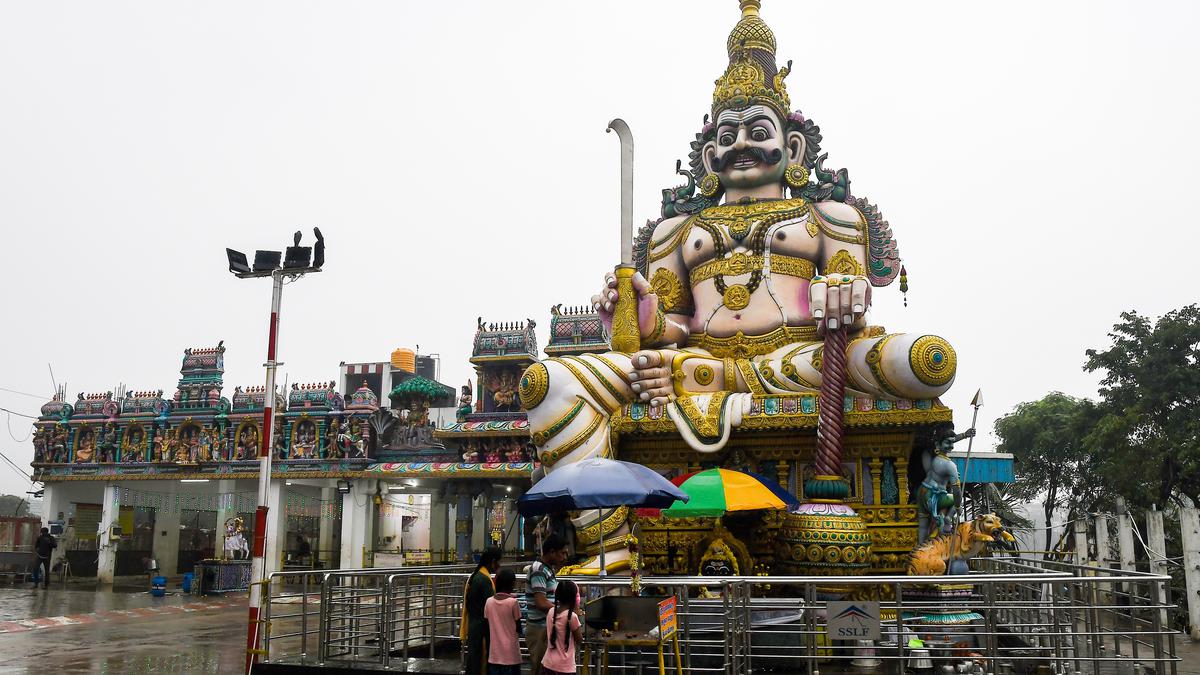
A temple for a giant Muneeswarar sits on the banks of the Adyar
The Hindu
Discover a 51-ft tall Muneeswarar in a seated position, along with shrines of other gods, at Burma Nagar's Arulmigu Angala Eswari Amman temple.
Each city has its own hidden nooks and corners where surprises wait to be discovered.
Deep inside Nandambakkam’s Burma Nagar sits one such location: a temple with a 51-feet-tall Muneeswarar in a seated position.
Beautifully decked, the deity has been made with soil brought from Burma (present-day Myanmar), and sits majestically in front of the Arulmigu Angala Eswari Amman temple. Bang opposite awaits an equally tall and gaily decorated horse—his ‘vaahanam’ (vehicle).
Devotees said that the temple has shrines of Lord Ganesha, Sri Veera Kali Amman, Sri Nagathamman, and Lord Muruga. Among the pantheon of gods on the ceiling of the Maha Mandapam is an idol of Peenikan Muni (sage) from Burma.
Angalamman and Muneeswarar seem to be common to all Burmese repatriate settlements in the city. But the other places do not have such large idols. Usually, such idols can be seen in villages. Muneeswarar is said to be an avatar of Lord Shiva, according to a temple expert.
The vast temple complex is located on the bank of the Adyar River, which was flooded during the recent rain. “Muneeswarar got inundated till His hip. If you look carefully, you can see the water mark. We were all evacuated to safer locations. There was no loss of life this time. During the 2015 flood, the water level rose to His shoulders,” recalled a devotee who did not want to be named.
It is a busy temple and is crowded on Fridays andAmavasyas (new moons). “We have annadhanam on both days and also during Chitra Pournami, Thai Poosam, and the annual 10-day-long Thiruvizha during March and April. People from places like Madurai and even Singapore come here and stay overnight as part of their prayers,” explained Pandian, an autorickshaw driver.













